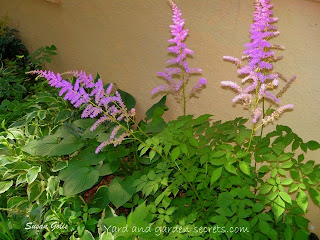Grow Echinacea coneflowers and fill
your yard with colorful blooms midsummer through fall. Coneflowers are one of the easiest and
most rewarding native plants, hardy almost everywhere in poor soil and drought tolerant.
Many
gardeners grow coneflowers in a prairie or cottage garden with companion flowers
daylily, black-eyed Susan, daisy, zinnia, catmint, and bee balm. The flowers will attract butterflies,
honeybees, hummingbirds, all summer long and in
the fall songbirds arrive to forage on the big, seeds.
Garden Design
Design
your coneflower garden in early spring. Decide on the color scheme and the type
of garden. Use colored pencils to indicate the types of flowers. This garden design will help you when you plant your flowers. Consider adding a water feature;
birdbath or fountain as well as a garden bench so you can enjoy this visually appealing wildlife garden.
Where to
Plant
Select a garden site that has eight hours of direct sun and well-drained soil. Prepare the garden site by removing grass,
weeds, and rocks. Loosen the soil with a tiller or shovel. Amend the soil with three
inches of compost. For a mass planting or prairie garden, dig a trench that is
as deep and wide as the nursery container.
How to
Plant
Remove the flower from the nursery container. Set the container on its side and tap
lightly on the side to loosen the soil, roll the container to the other side
and tap again. When the soil is loose gently,
remove the plant from the container. Gently
shake the excess dirt from the roots and loosen the entwined roots from the root
ball.
Set the plant in the hole and place the roots on the soil so that they will grow
outward. Fill in the hole with soil and firm the soil around the stem of the plant.
Water the transplants well. To allow for growth, leave a space of twelve inches
in-between plants.
Caring for Flowers
- Feed the plants with water-based fertilizer that is formulated for flowers. Follow the direction on the fertilizers for the amounts needed for your garden size.
- Apply two-inches of pine needles, dried grass clippings or wood bark chips. The natural mulch will enrich the soil and aid in keeping the soil evenly moist.
- Cut back flowers after a hard frost and apply two inches of natural mulch to your garden bed.
- Remove the mulch in spring and fertilize with all-purpose (the flower formula), I use miracle-gro.
- Watch for new growth. If flowers come in thick and appear overcrowded, divide the clumps and transplant in spring.
Tips
- Mature plants are drought tolerant.
- During blooming season, remove spent blooms to encourage more flowers.
- Coneflowers will tolerate some partial shade in the heat the day.
- Water transplants daily until roots are established. Then water as needed, or a couple times a week.
- Weed the garden monthly to stop weeds from competing with flowers for nutrients.
- Leave seedheads to provide food for songbirds.
- Grow in USDA zones 3-9.
Warnings:
- Overcrowded coneflowers will attract powdery mildew.
- Check your garden for the Japanese beetle. Treat garden pests by dusting with Diatomaceous earth food grade.
- Buy Coneflowers live plants not seeds at Brecks.nursery.com or Greenwoodnursery.com

